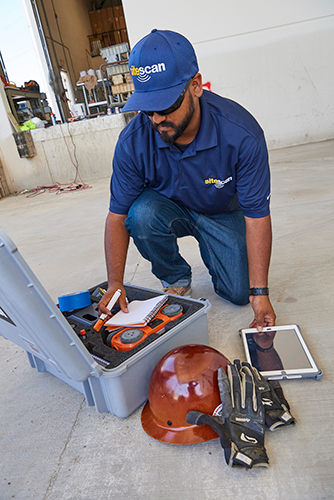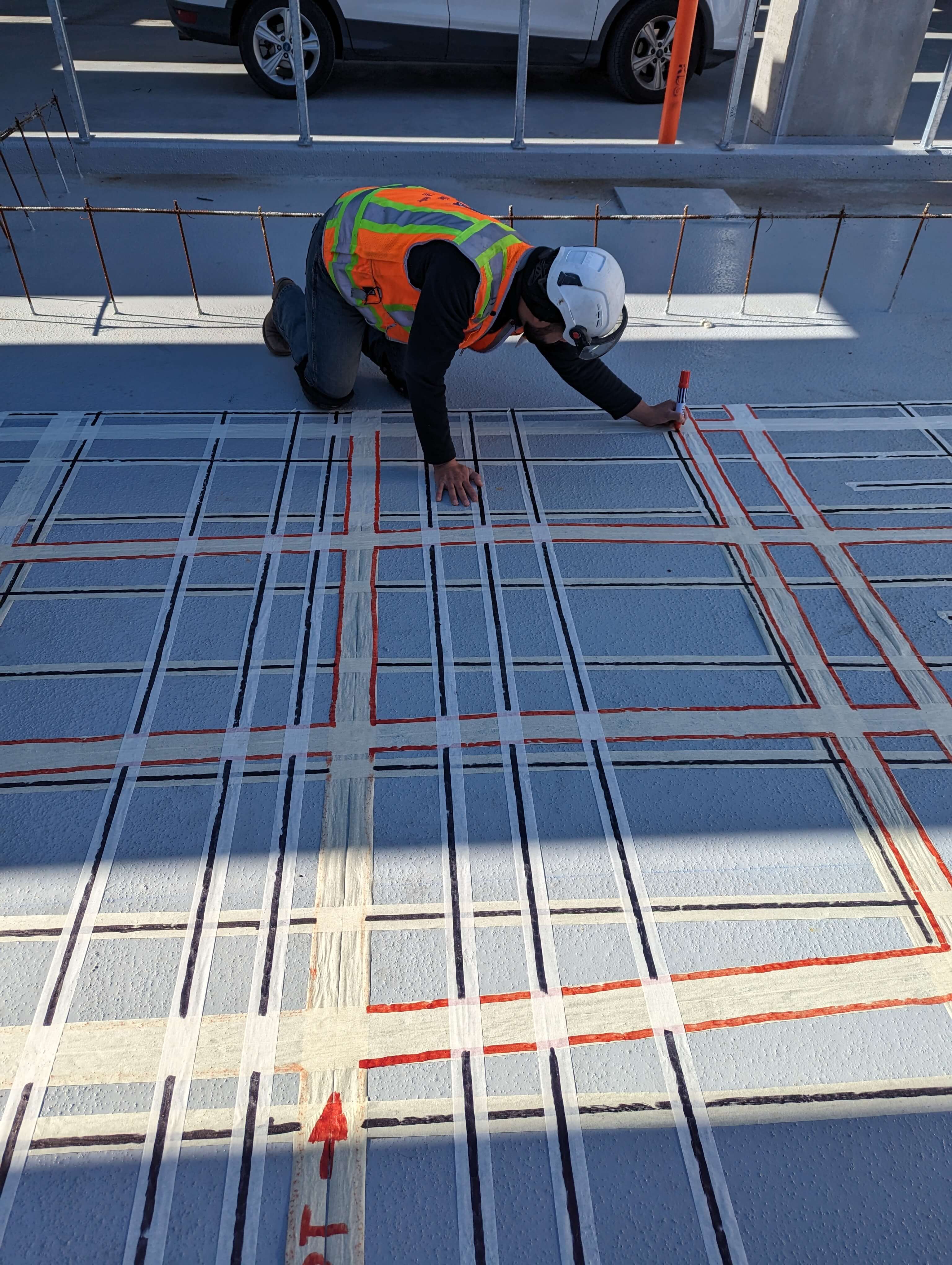Effective Concrete Scanning Techniques for Construction Tasks
Effective Concrete Scanning Techniques for Construction Tasks
Blog Article
Elevate Your Building Process With the Strategic Insights of Concrete Scanning for Enhanced Efficiency
In the world of modern building and construction methods, the quest for efficiency and accuracy is critical. Embracing innovative technologies has become a foundation for accomplishing these objectives. One such modern technology that has revolutionized the construction market is concrete scanning. By utilizing the critical understandings supplied by concrete scanning, construction experts can open a world of boosted performance and streamlined procedures. The ramifications of integrating concrete scanning go far past surface-level benefits, using an extensive effect on job results.

Advantages of Concrete Scanning
Enhancing project efficiency and safety and security, concrete scanning supplies a non-destructive technique for detecting covert objects within concrete structures. By utilizing innovations such as ground-penetrating radar (GPR) and concrete x-ray imaging, building and construction groups can precisely find rebar, post-tension cords, electric channels, and other blockages prior to exploration, reducing, or coring into concrete.
The advantages of concrete scanning are many. Construction websites can be complex atmospheres, and knowing what lies beneath the surface area can avoid crashes and injuries.
In addition, concrete scanning promotes general task efficiency by simplifying workflows and stopping rework. By recognizing potential problems early, teams can change their strategies proactively, conserving time and sources over time. Basically, the adoption of concrete scanning innovations is a strategic investment that pays returns in regards to performance, cost-effectiveness, and safety and security.
Innovation Combination for Effectiveness
Concrete scanning's capacity to simplify operations and enhance project efficiency can be further maximized through strategic integration of advanced innovations. By incorporating Building Information Modeling (BIM) software program into concrete scanning processes, construction groups can attain a higher level of accuracy and control. BIM permits for the development of 3D designs that offer thorough understandings into the job, making it possible for much better decision-making and minimizing the possibility of mistakes. In addition, the combination of Augmented Fact (AR) innovation with concrete scanning can boost on-site visualization, enabling project managers and workers to overlay digital details onto the physical atmosphere in real time. This can facilitate extra exact positioning of elements and boost communication among employee. Furthermore, making use of drones for airborne surveys along with concrete scanning can speed up information collection and evaluation, allowing much faster decision-making and development tracking. Generally, the calculated assimilation of these innovations can significantly improve performance and productivity in building and construction jobs.
Staying Clear Of Expensive Mistakes
How can thorough interest to information throughout concrete scanning processes assist building groups in avoiding expensive mistakes? Concrete scanning plays an important role in determining possible issues before they rise right into expensive blunders. By using advanced scanning technologies such as Ground Passing Through Radar (GPR) and electro-magnetic induction, construction teams can accurately detect rebar, utilities, gaps, and other obstructions within concrete structures. This degree of accuracy makes it possible for job managers to make informed choices relating to the layout and design of their construction strategies, lowering the threat of unintended damages to vital infrastructure during the structure process. Furthermore, concrete scanning assists in making certain structural honesty by identifying weak points or issues in the concrete very early on, enabling prompt repair services and alterations. By proactively resolving these issues, building and construction teams can stay clear of pricey mistakes such as rework, hold-ups, or security risks that may emerge from neglected inconsistencies in the concrete structure. Inevitably, purchasing thorough concrete scanning procedures shows to be an affordable strategy in the future, conserving both time and sources while boosting general job effectiveness and quality.
Enhancing Project Management
Careful focus to detail during concrete scanning processes not only helps in staying clear of costly mistakes but additionally lays a strong foundation for reliable task management in construction ventures. By incorporating concrete scanning innovation into project management strategies, construction teams can simplify process, boost interaction, and make certain that jobs remain on track.
Concrete scanning anchor supplies useful insights into the structural stability of existing elements, allowing job managers to make informed decisions regarding style modifications or building and construction series. This aggressive strategy lessens the threat of unexpected delays or remodel, eventually conserving time and sources. Additionally, the information gotten from concrete scanning can be incorporated into Building Information Modeling (BIM) platforms, making it possible for real-time partnership and coordination amongst numerous stakeholders.
Moreover, concrete scanning helps task managers determine prospective risks or obstacles prior to they escalate into larger concerns, promoting a more secure work setting for all included. With improved exposure and accuracy offered by concrete scanning modern technology, project managers can successfully plan, keep an eye on, and implement building projects with higher efficiency and self-confidence.
Maximizing Productivity
To boost performance in construction projects, carrying out reliable strategies and using sophisticated modern technologies is crucial. Making best use of performance entails improving procedures, enhancing source allocation, and lessening downtime. One key aspect of taking full advantage of productivity is via the adoption of concrete scanning technology. By utilizing ground-penetrating radar (GPR) and various other scanning techniques, building and construction groups can properly locate rebar, conduits, and various other subsurface aspects, reducing the risk of expensive errors and delays during excavation and boring.
Additionally, accepting Building Details Modeling (BIM) software program can considerably improve productivity by developing detailed 3D models that enhance job visualization and control amongst different professions. BIM enables much better clash discovery, making it possible for problems to be identified and solved prior to building even starts, saving time and sources in the long run.
Executing a lean building method, which concentrates on removing waste and enhancing effectiveness throughout all job stages, is an special info additional effective approach for optimizing productivity. By promoting partnership, communication, and continuous renovation, construction teams can work extra cohesively towards accomplishing task goals in a structured and productive way.
Final Thought
Finally, the tactical execution of concrete scanning in the building process uses numerous advantages, including raised performance, price savings, boosted project administration, and enhanced efficiency. By integrating this innovation, construction teams can prevent costly errors, simplify their procedures, and optimize their total job result. Concrete scanning is an important tool that can raise the construction procedure and bring about more successful and profitable results.

Report this page